Foxes are vivid when the woods seem sleepy, and theatrical when most wildlife conserves its strength. It is the contrast that jolts when a fox emerges on a winter’s morning, flame-coloured fur against monochrome hills, underscored by the unspoken puzzle of a wild animal in a working, humanised landscape.
Foxes are beside us, always, weaving unique perspectives on landscapes that we think we know. They are the product of a much older world – of wildwood coursed by wolves and pounded by bison – but have thrived during thousands of years of human influence on the British landscape, and we continue to shape their lives.
Whatever we do nudges them, from the contents of our flowerbeds to our choices about litter. But there is still something from the untamed times that flows bright under that cosy orange fur, a guide that reminds us that the viewpoint of our wild neighbours can be very different to our own.
In this guide, we take a closer look at foxes in the UK, revealing what they eat, how long they live for, where they live, and when they mate. Discover more about Britain's wildlife in our guides to badgers, hedgehogs and deer.
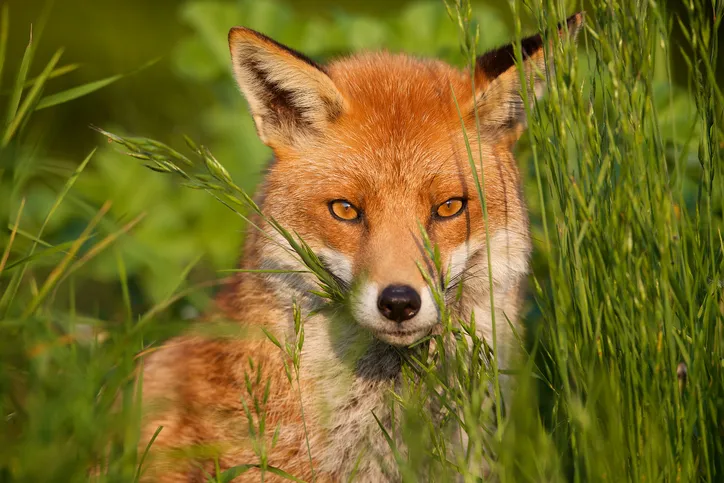
How to identify a fox
Foxes come from the same family of animals as dogs, so they move in similar ways. What marks them apart, however, is their rusty red fur, pointed ears and big, bushy tail.
How long do foxes live?
The average life expectancy of a fox in the wild is 3-4 years.
Where do foxes live?
Foxes eke a living wherever there is food and shelter, from south-coast beaches to the Highlands, catholic in their food selection and complex in their interactions with other species.
Foxes do not hunt in packs like wolves; there is nothing to be gained through three foxes bringing down a mouse. What binds them is land.
Foxes adapt to settings and they adapt to weather, defying the burning dawns of India as much as the brittle chill of the Canadian north. Perhaps, like Britain’s people, foxes find our relatively balmy climate unreasonably trying. Regardless, snow forms a stately backdrop for a thousand calendar images of foxes, at least when it isn’t turning them absurd.
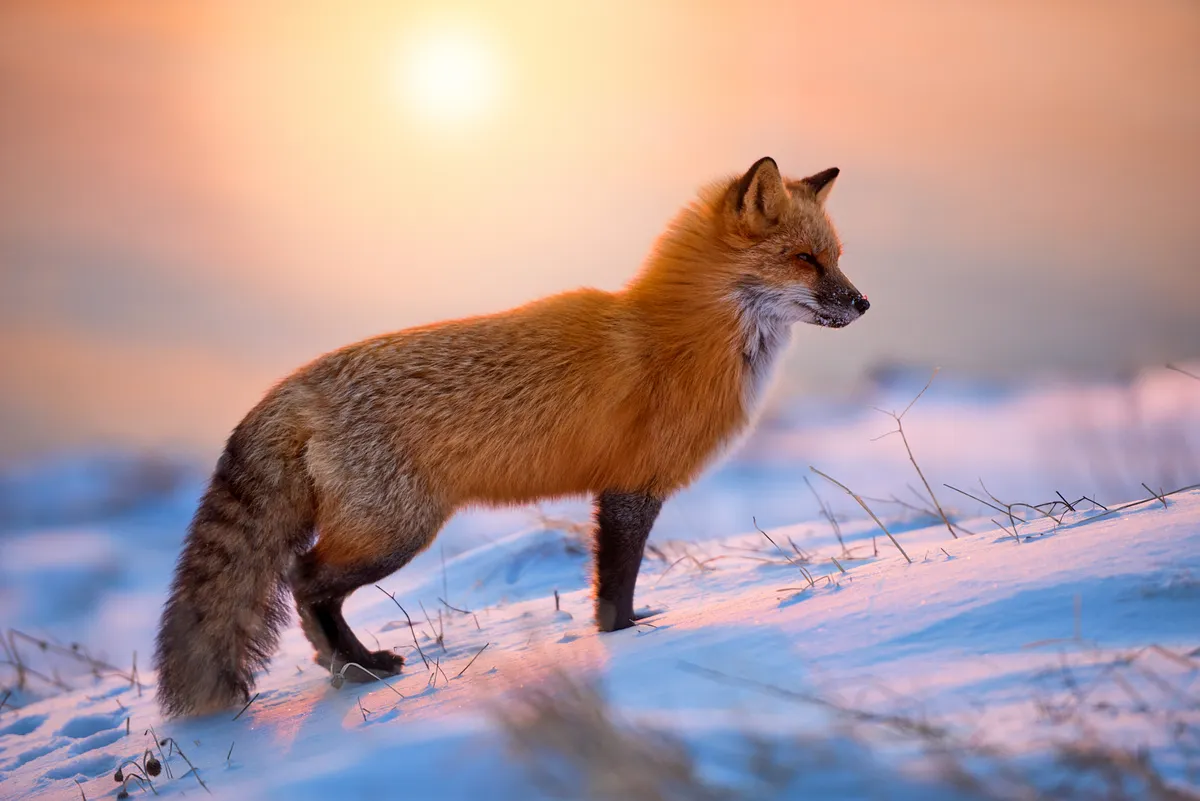
Where do foxes go in the day?
Many foxes live in family groups dominated by a breeding pair, but there are a significant number that exist as ‘transients’, travelling fast and alone over a much wider landscape.
You're less likely to see foxes in the day, when they spend their time resting under bushes, laying low in the sun, or seeking shelter beneath a garden shed.
Foxes are crepuscular, most active at dusk and dawn, which is when you're most likely to see them.
Is there a difference between urban and country foxes?
Although they are the same animals, urban and rural foxes have very different diets and behaviours thanks to their surroundings. Rural foxes eat rodents, rabbits and birds, while city foxes will often consume food waste, litter and anything else they can find on the city streets. All foxes are known for their den-building abilities, but in urban environments where there are fewer forested areas, foxes will dig burrows at the end of gardens.
Their behaviour also differs, with rural foxes still wild in nature, fearful of humans. Urban foxes, meanwhile, are accustomed to densely populated areas and are often tame around humans.
Read our urban wildlife guide for more information on other urban animals and their behaviours.
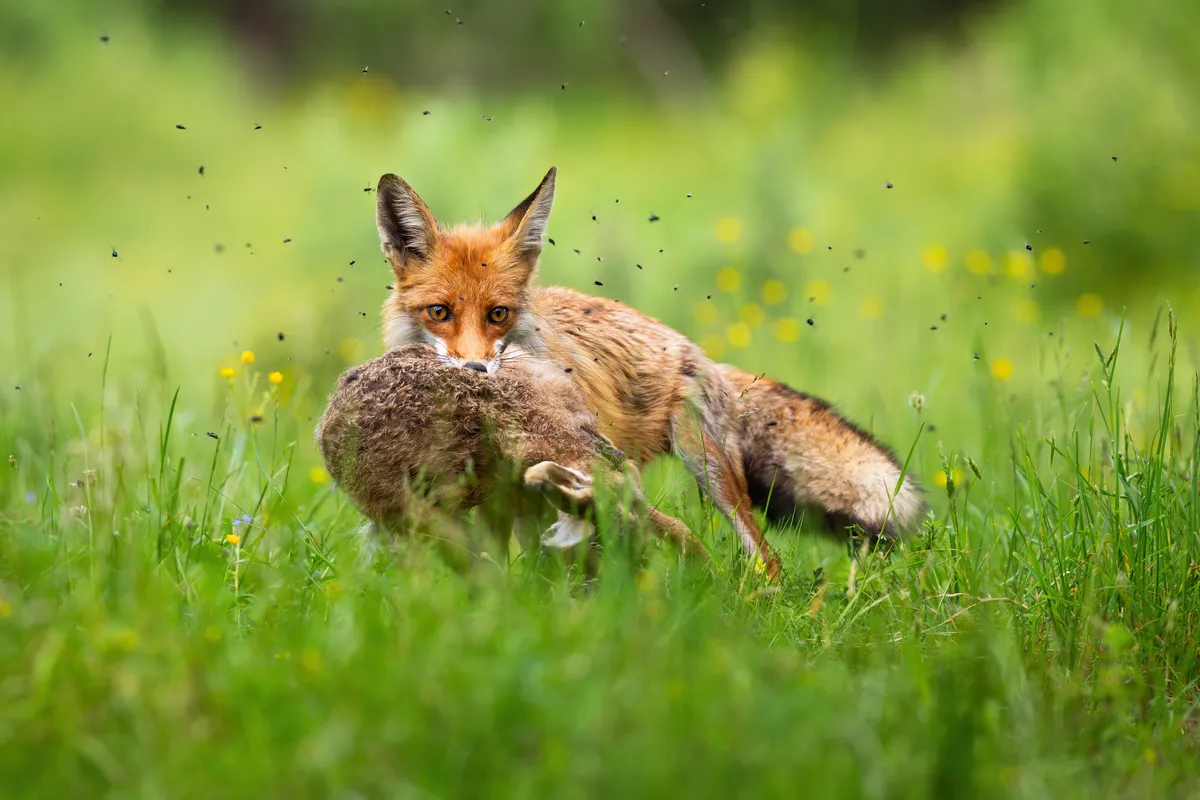
When do foxes mate?
Most mating between foxes occurs between Christmas and mid-January, as vixens (female foxes) are only fertile for three days a year, typically during this time.
Winter arrives with fieldfares cleaning out the berry bushes and roe deer sporting seasonal grey, and tensions in fox politics turn critical.
Although they are often described as monogamous, genetic research has shown a more complicated picture, and seasonal trespassing by very large males does lead to successful extra-pair matings. Lower-ranking vixens may conceive, but often will not carry the cubs to term due to stress hormones, and any survivors can be at risk from the highest-ranking vixen. In the heated debate over fox control, it is often overlooked that one of the biggest brakes on the system is the intense competitiveness of other foxes. Vixens do not care about the abundance of their species; they only wish to promote their own genetic material.
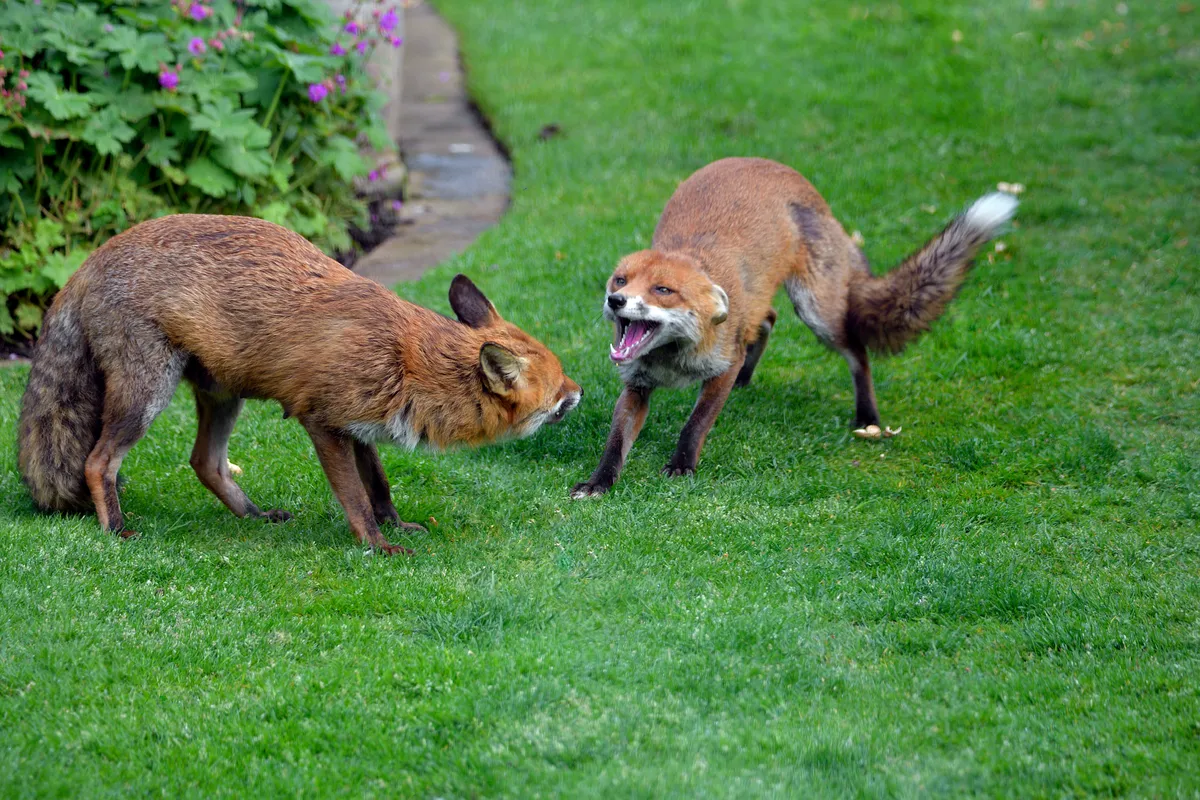
How many foxes are there in the UK?
Defra’s habitat model suggests there are 430,000 foxes nationally, and recent research indicates that, while their spread into urban areas continues, the rural picture is mixed. Mange, competition with badgers and intensity of gamekeeping are all factors, but modern land management deserves a closer look. Notwithstanding the many farmers who work hard to conserve wildlife, there are vast areas of Britain where hedgerows are annually flailed, hay-meadows converted to silage and arable margins pushed back for extra crops – all actions that reduce food for foxes.
The recreational revolution adds new pressure: pony paddocks and golf courses can do severe damage if managed badly. Of course, foxes are far more robust than yellowhammers or dormice, but good vole numbers appear to reduce predation on our beleaguered lapwings and redshanks, so there are many benefits when small mammal habitats survive.
What do foxes eat?
Foxes will eat almost anything, but 95% of the diet of a rural fox will be meat-based. In urban areas, this will be closer to 50/50, with the other half being household waste, thanks to their scavenging tendencies.
Foxes hunt rabbits – at least where haemorrhagic disease hasn’t eradicated this textbook prey. They also hunt earthworms with enthusiastic zeal and, perhaps more startlingly, can also be effective predators of dawn fawns. One Swedish study found that 81% of roe fawns were taken, a fact that British forestry managers worried about deer browsing pressure may wish to ponder.
Adult deer are far beyond a fox’s capacity, but where their range still overlaps with that of the wolf, foxes readily consume deer and wild boar carrion. In Britain, they instead exploit herbivores killed by cars, or meat presented to them as a garden treat.
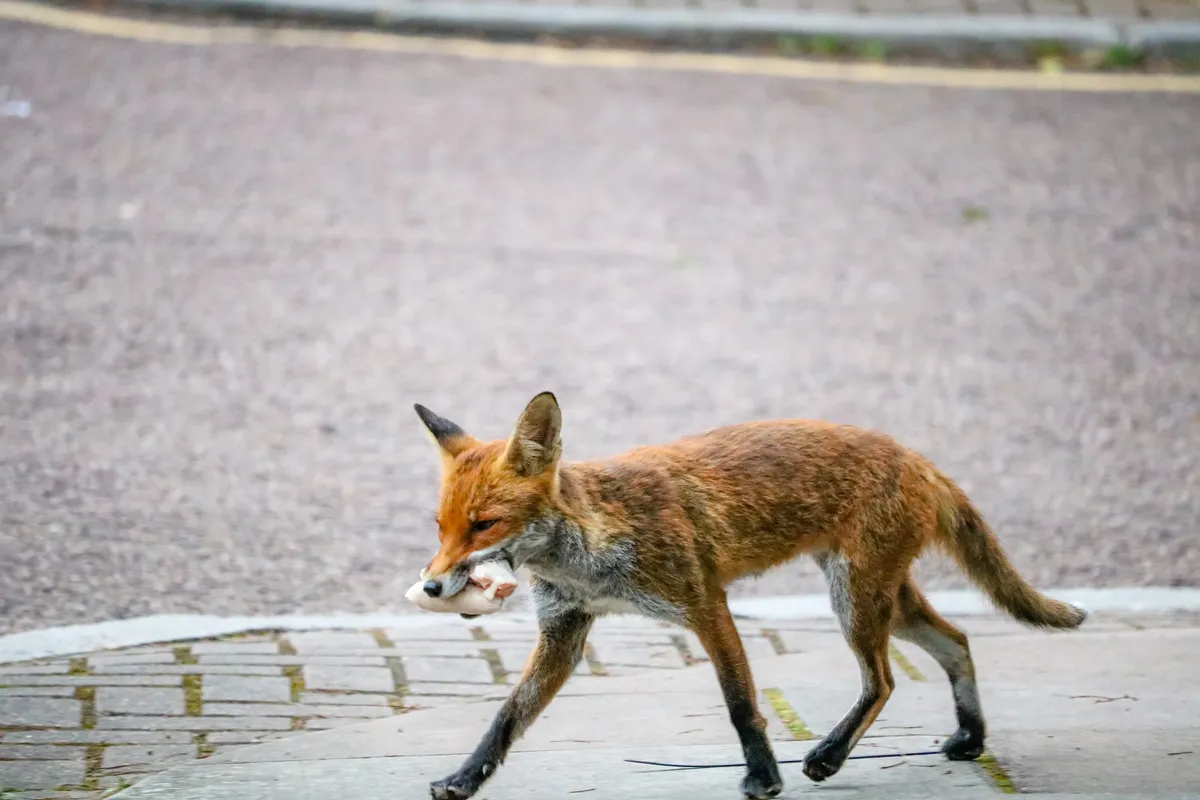
Are foxes natural-born killers?
For some, the most memorable fox encounter is unspeakably distressing: a chicken coop turned into a bloodbath. Anger is followed by moral questions about greed and waste, but that achieves nothing: holding a wild animal to human ethical standards is profoundly flawed. The instinct itself is common in carnivores from lions downwards: they do not have supermarkets and can’t be sure of tomorrow’s meal. Their prey drive compels them to snatch at every hunting opportunity, which can be catastrophic when prey is artificially confined. Foxes will usually store food that they cannot eat immediately, and electric fences and sturdy coops keep both hens and wildlife safe.
The tradition of fox hunting
Boxing Day is also St Stephen’s Day, which seems to have become mixed with folklore about another St Stephen who was a patron saint of horses. The ancient practice of feeding horses generously on 26 December possibly contributed to this becoming the busiest day on the hunting calendar. Sixteen years after the Hunting with Dogs Act outlawed fox hunting, its traditions are kept alive by bloodless draghunts where foxhounds or bloodhounds follow a pre-laid scent, or a human runner.
Controversial trail hunts – where the route is not revealed in advance – also continue, accounting for conflicts between participants who argue that they are legally keeping culture alive and those who claim that foxes are being deliberately or recklessly killed.
Find out more about the history of fox hunting in the UK.
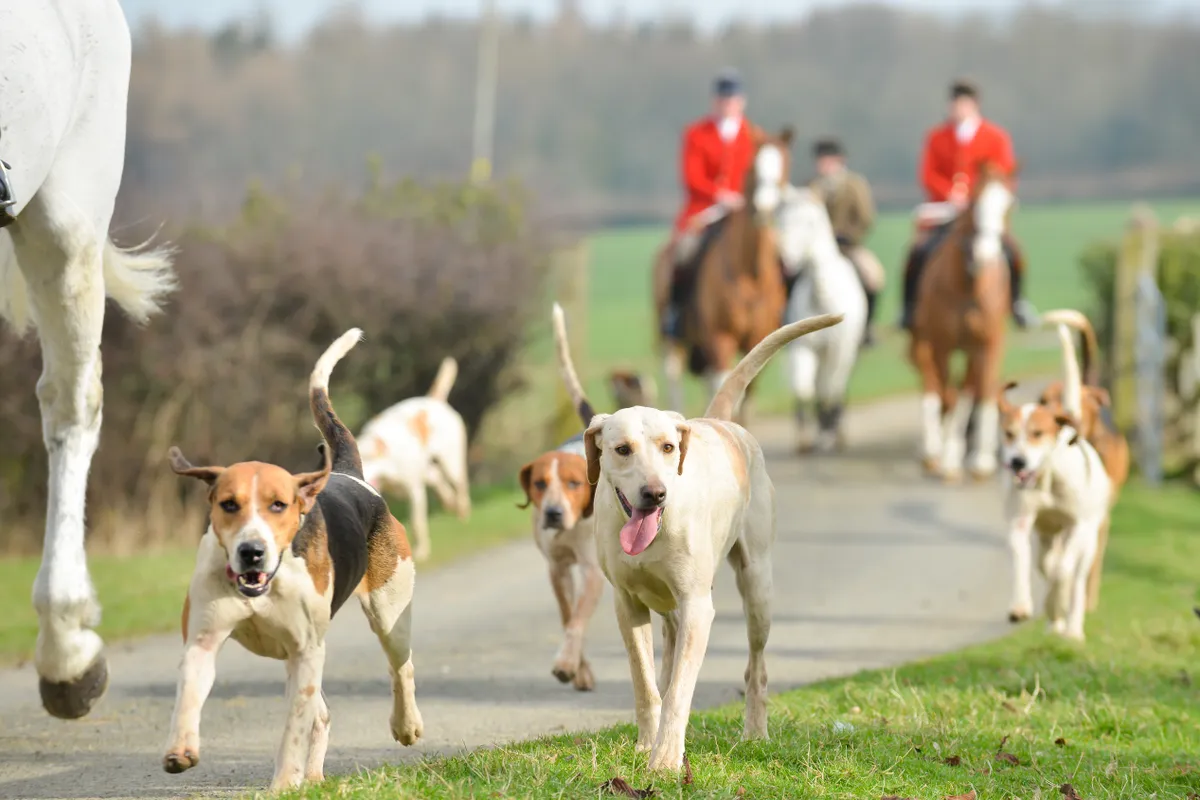
Why do foxes scream?
Screams that split open evenings with all the energy of a cat’s claws down a blackboard: that can only be a fox, raging at its own kind with ear-shattering but bloodless zeal. The fox’s loudest cry is so improbable, such a poor fit for its delicate frame, that it is regularly mistaken for a human victim of crime. Sometimes the protagonists lie facing each other like sphinxes, open-jawed and evocative with the ears; sometimes they are on their hind legs, pushing at each other in the ‘foxtrot’ ritual fight.
Foxes have a rich range of other chatter, from the terse triple barks that echo through the woods in the breeding season, to close range ‘clicketing’, which has been compared to stones being knocked together. More subtle fox talk, such as scent marking and body language, also guides their lives. Look out for curled tails in submissive foxes and arched backs in dominant ones.
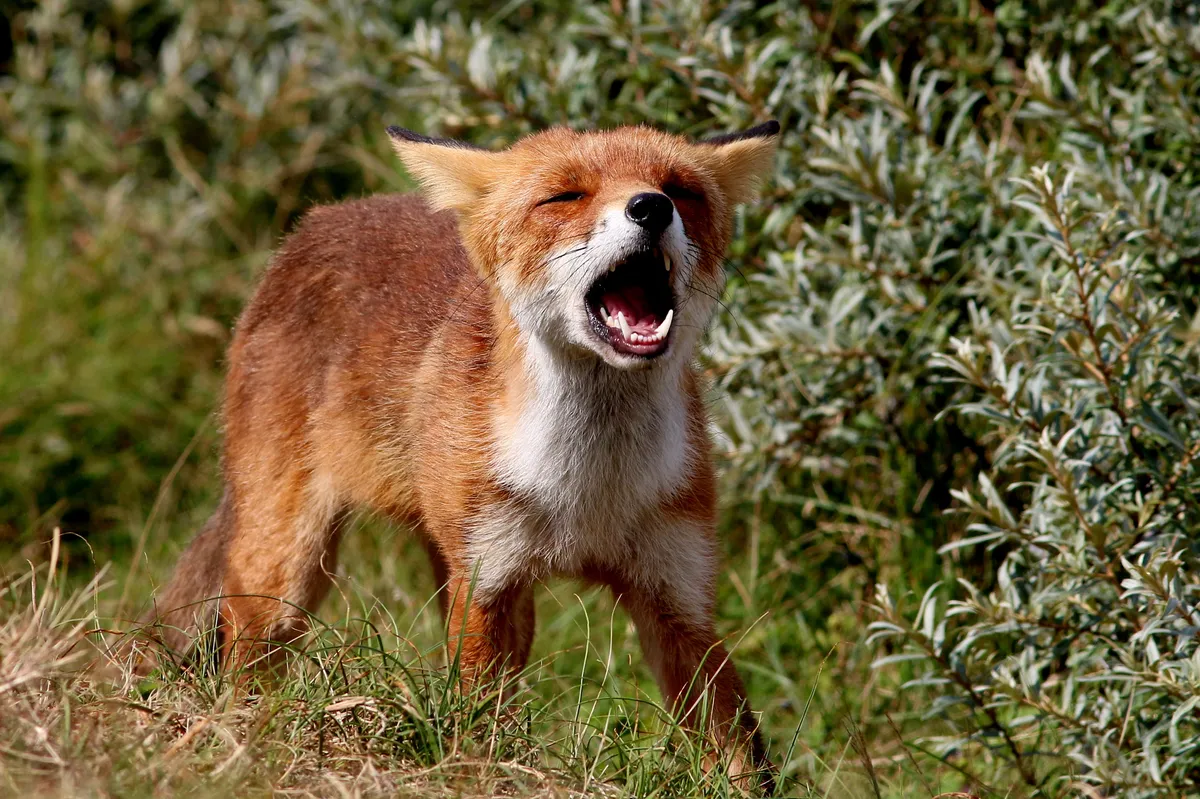
What are female foxes called?
Female foxes are called vixens.
How far can foxes walk?
Some foxes do take prodigious journeys, especially when dispersing from their parents. One American individual managed more than 400km (248 miles), although most do not travel far, especially in high-density populations.
